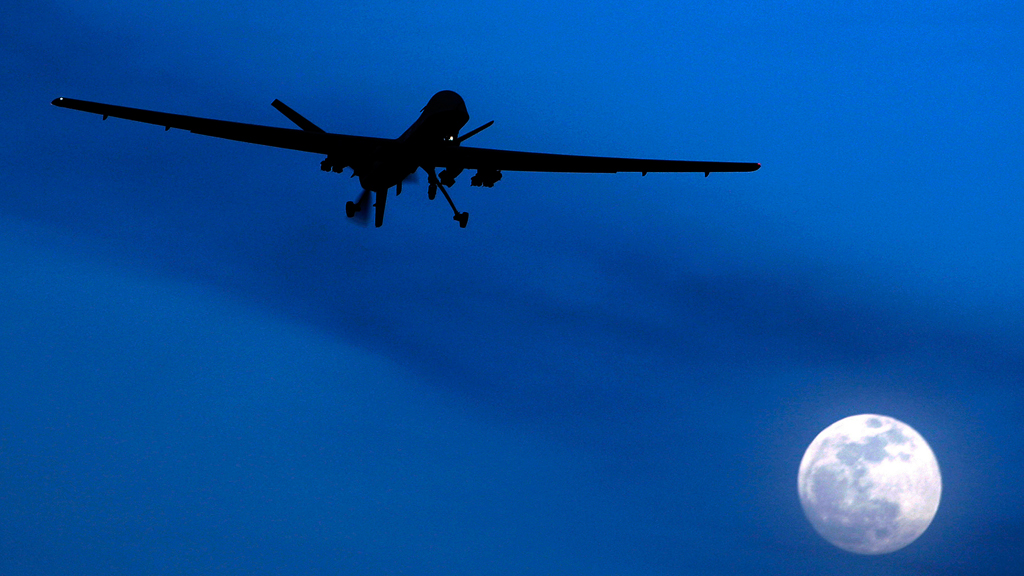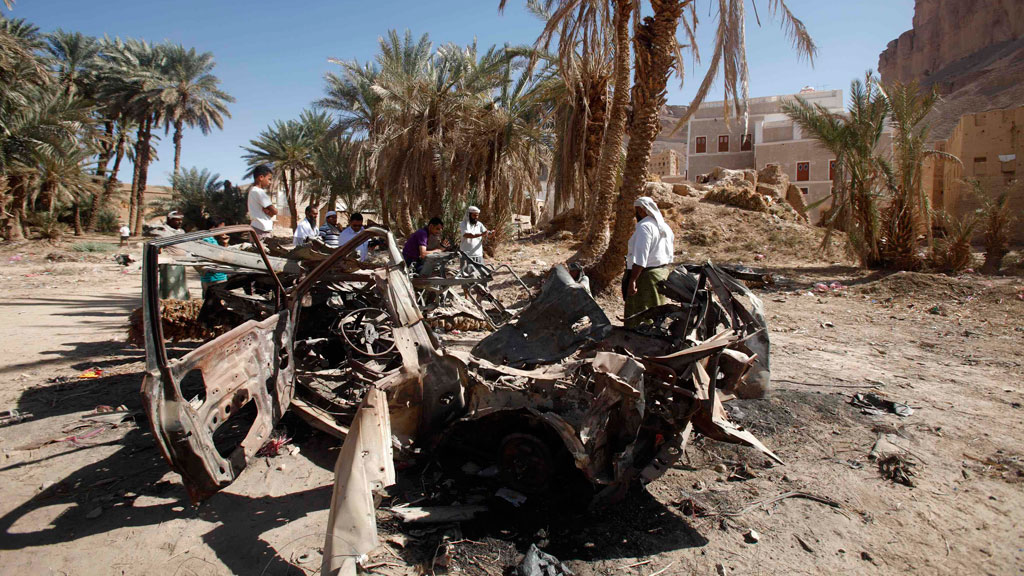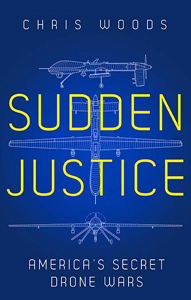"It's not risk-free war, it's displaced war"

How and when did drone warfare begin?
Chris Woods: Drones have existed for decades, especially for surveillance. But the first successful weaponising of a drone did not happen until 2001. In fact, it took place a few days after George W. Bush's so called "War on Terror" started in Afghanistan to drive out the Taliban and al-Qaida. It was 7 October 2001 when the first drone strike in combat took place.
How precise are these strikes?
Woods: The manufacturers, the military and the CIA want to make us believe that they are unbelievably precise. In fact, the CIA has described armed drones as the most precise weapon in the history of warfare. But if you think about that for even a moment, you realise how ludicrous this claim is because the most precise weapon in warfare, which has been around for thousands of years, is the knife. You know what a knife is going to hit and what it is not going to hit. There is relatively greater precision to weapons released by drones than by other aircraft but that still does not mean that these missiles do not kill civilians. Civilians have been killed on many occasions by drones over the years.
Drone warfare is also used in Somalia, Yemen and Pakistan. The US are not officially at war with these countries, so how do they justify their actions?
Woods: We have to think about the drone war in two distinct ways. The first one is the drone war on regular battlefields, like in Afghanistan, Iraq, Libya and Syria. These conflicts are backed on an international level and are governed by the laws of war. Around 90 per cent of drone strikes have taken place on these regular battlefields. It is the 10 per cent which are the problem, and those are the targeted assassinations carried out by the CIA and US Special Forces in Yemen, Somalia and Pakistan.
The United States claims that these killings away from the battlefield are lawful. Almost all other countries – including its European allies – disagree with the United States. They view the targeted killing of individuals by war machines away from the battlefield as unlawful. It is important to remember that the Obama administration and the Bush administration always claimed that their secret drone strikes were lawful while they have never showed any legal justification for these actions. They also prevented every opportunity for US courts to scrutinise the legality of drone strikes. So the United States likes to claim that its drone strikes in places like Pakistan are legal while it is very unwilling to show any proof of it.

It is the drone pilots who do most of the work. Could you describe a typical working day for such a pilot?
Woods: All of the drone missions the Americans fly with the CIA, Special Forces or the regular army are done by Air Force personnel who fly from remote places like Nevada, New Mexico, Virginia and so on. There are about a dozen remote drone bases in the United States at the moment.
There are thousands of men and women involved in that now. There are pilots, sensor operators, mission co-ordinators, weather specialists and lawyers. We tend to overlook the intelligence-gathering side of the drone war, which is a huge aspect. Often, the pilots themselves are some of the least empowered people in the hierarchy. The operators are just told "Do this! Do that! Go there!" During very sensitive missions, they are sometimes even forbidden to look at their own screens. The Hollywood image of drone pilots is often not true. They are much less empowered, and this is also one of the problems that leads to psychological issues for drone operators over the years.
Another area haunted by armed drones is Palestine. Why do we hear almost nothing about the drone war there?
Woods: We do not know a great deal. For decades, Israel has been the world's leading drone-producing nation. But Israel was three years behind the United States in weaponising its drones. As far as we know, the Israelis first use of armed drones took place in 2004.
One of the problems we have in trying to understand Israel's use of drones is that it is still highly classified. For example, Israeli journalists are forbidden by the military to refer to Israel's armed drone programme. They just allude to it by referring to others who refer to it. There are also no images available of any armed Israeli drones. It is a highly classified programme, and the Israelis are very secret about it.
But we do know, simply because people in Palestine can see and hear the drones, that they are used very heavily – not just in the Gaza Strip, but also in the West Bank. Israeli drones have probably been used in hundreds of targeted assassinations and bombings since 2004.
The Israelis use different weapons to the United Sates. They have their own weapons and tactics. They use something called "knocking", by using a small missile to warn Palestinian residents and to let them know that they are going to be bombed a few minutes later. The United States do not use such tactics. Another big difference is that the Americans or the British do not bomb urban areas with armed drones. Israel almost always bombs urban areas with its drones. We have often seen very high civilian casualties in Israeli air campaigns. The value placed on Palestinian lives is, in my view, too low.

You visited places like South Waziristan, where drones have become part of daily life. How do drones affect the lives of the people there?
Woods: The number of drone strikes in Pakistan has always been small because they are assassinations or targeted killings. But we know, because the US released this information, that for every drone strike in Afghanistan there were 29 other missions that did not end violently. If you multiply that for Pakistan, it means that there have been 12,000 drone missions over a tiny part of Pakistan, which is Waziristan and its specific areas. This means that the civilians living there are under permanent surveillance and fear.
The drones have the ability to strike without warning and they do exactly that. I think that this is part of the psychological terror of the drones. But it is not just the drones. People in Waziristan have a constant fear of Pakistani air force strikes or terrorist attacks by al-Qaida and other groups. The drones are part of the whole misery the people there face.
Have Western citizens been killed by drones?
Woods: Most drone victims are locals. Five per cent of the victims are from outside the region, for example North Africans or people from the Middle East. As far as it is known, around 40 Western citizens have been targeted and killed by drones since 2002. The highest numbers are Americans: ten US citizens have been killed, followed by German and British citizens.
Officially, the United Kingdom and Germany claim that they have not assisted the CIA in these strikes because the official position of their governments is that the attacks are unlawful. So they say there was not any intelligence co-operation. But German politicians like Hans-Christian Strobele and the intelligence committee of the Bundestag believe that this is not true. The same view is shared by a number of British politicians. I think it is time for a public debate in both countries to find out more about that. Let's be absolutely clear about this: it is unlawful for British and German intelligence officials to do this. I think that is a scandal.

What does the future of drone warfare look like?
Woods: My concern about the use of drones is about how fast they are proliferating now. So many nations are in a race to acquire their own armed drones. But also war itself is changing. Half of British air strikes in Iraq today are by drones, one in four US air strikes in the same area are by drones.
The idea of remotely piloted aircraft is moving away from assassinations to the regular battlefield. I think it's making politicians and generals complacent about war. They are buying into a fantasy of a supposedly risk-free war. But it's not risk-free war, it's displaced war. We see the British air force attacking IS in Iraq and Syria, there are no boots on the ground that IS could attack. But we face a risk-displaced war because unfortunately, we saw 30 British tourists massacred in Tunisia by IS, in part in retaliation for the bombings of the British military. We are not at less risk, we just move the risk away from our militaries to our own civilian populations.
But we also lower the pressure for war. I believe that politicians are far too ready to reach for drones instead of diplomatic solutions and negotiations. Drones seem to be an easy and fast solution, but they are not.
Take Yemen for example, the United States started their drone war about five years ago. Yemen is ten times more unstable today than it was before the Americans began their bombing and al-Qaida is ten times stronger than it was. Not all of that is the fault of drones, but I believe that drones are feeding into the politicians' and generals' delusion that war has become risk free. That's a false view they are promoting to us.
Emran Feroz
© Qantara.de 2015
Chris Woods is an award-winning investigative journalist specialising in conflict and national security issues. He contributes regularly to leading media outlets such as "The Guardian" and also works with "The Bureau of Investigative Journalism", a non-profit news organisation based in London.